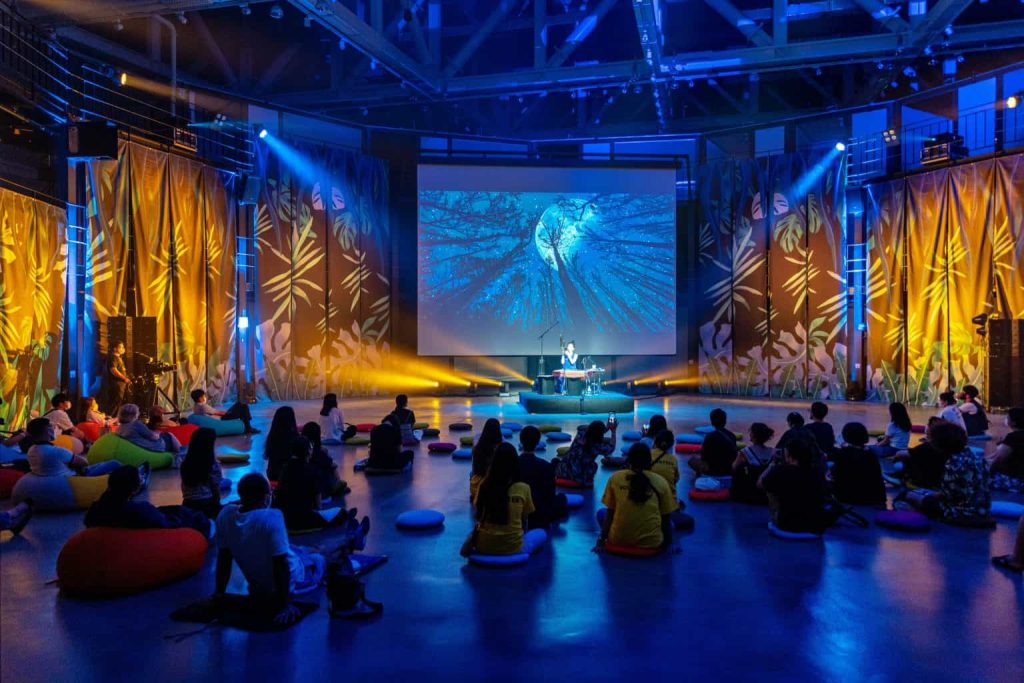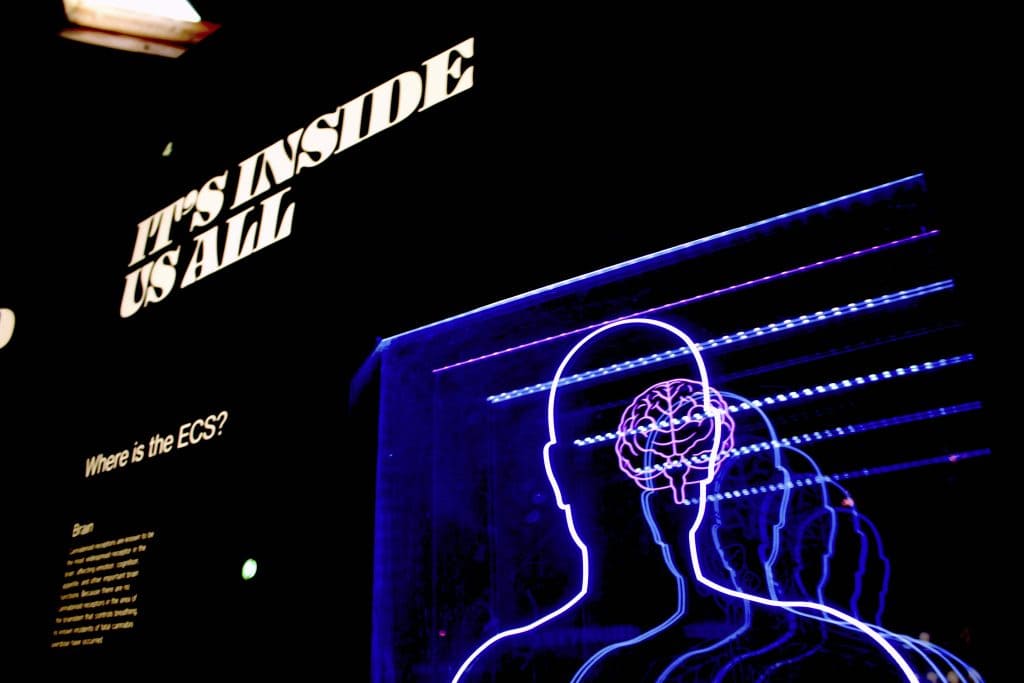
04 Mar Interactive Elements in Digital Art Shows
Digital art shows have surged in popularity, offering a dynamic platform for artists to showcase their work and experiment with new mediums. These exhibitions, fueled by technological advancements, feature a diverse array of digital artworks, from mesmerizing paintings to immersive virtual reality installations. What distinguishes these exhibitions is their integration of interactive elements, which invite viewers to actively engage with the artwork, blurring the lines between artist and audience.
By embracing interactivity, digital art exhibitions transcend traditional viewing experiences, fostering deeper connections and shared creative encounters. Through motion sensors, touch-sensitive surfaces, and immersive environments, viewers become co-creators in the artistic process, exploring the limitless possibilities of digital expression. As the digital art movement continues to evolve, these exhibitions serve as vibrant hubs of creativity, pushing the boundaries of artistic innovation and shaping the future of visual culture.
Types of Interactive Elements

Photo by asiaculturecenter
Sensory Engagement
Visual
Visual experiences in interactive installations have evolved significantly, incorporating touch-sensitive screens that respond to human touch, enabling users to engage with digital content in a tactile manner. Projection mapping techniques have also revolutionized visual arts by transforming static surfaces into dynamic canvases, where imagery and animations can come to life. Motion-tracking cameras further enhance immersion by capturing and responding to the movements of participants, allowing for interactive experiences that adapt in real-time. Responsive light installations add another layer of engagement, as they dynamically change and react to the presence and movements of individuals within the space.
Auditory
Auditory elements in interactive environments complement visual experiences, with soundscapes reacting dynamically to user movements. Biofeedback-driven music systems integrate physiological signals to generate adaptive musical compositions, creating personalized auditory experiences for participants. Interactive soundscapes offer users the opportunity to manipulate and influence audio environments through their interactions, fostering a deeper sense of engagement and exploration.
Kinesthetic
Kinesthetic experiences in interactive art installations leverage virtual reality technologies, offering immersive environments where users can engage with digital content using their bodies. Body-tracking technology enables real-time interaction and feedback, allowing users to navigate and manipulate virtual spaces through physical movements. Interactive sculptures provide tangible and tactile interfaces, inviting users to explore and interact with physical artworks in novel ways.
Creative Participation
Creative participation platforms facilitate real-time contribution and collaboration, empowering users to co-create artworks and shape their evolution over time. Data-driven insights and artificial intelligence algorithms inform artistic processes, allowing for dynamic and responsive creations that adapt to user input and environmental stimuli. Augmented reality overlays provide additional layers of information and context, enriching the viewer’s understanding and appreciation of the artwork.
Educational and Informational
Educational and informational aspects of interactive installations integrate interactive displays to provide context and insights into artistic concepts and themes. Gamification elements such as quizzes and challenges enhance user engagement and facilitate learning experiences within interactive environments. Virtual tours and augmented reality overlays offer access to inaccessible details and hidden narratives, expanding the accessibility and inclusivity of interactive art experiences.
Impact of Interactive Elements on the Viewer

Photo by Carlos Gil
Increased engagement and active participation
When viewers are invited to move beyond passive observation, they inherently become active participants in the artwork. This engagement could involve interactive elements, such as touch-sensitive displays, immersive environments, or participatory performances. By interacting directly with the artwork, viewers contribute to its unfolding narrative, adding layers of meaning and interpretation.
Deeper understanding and reflection
Encouraging critical thinking and exploration of the artist’s message is a core outcome of interactive art experiences. By prompting viewers to engage with the artwork on multiple levels, such as intellectually, emotionally, and sensorially, interactive pieces encourage deeper reflection and interpretation. Viewers may find themselves contemplating the symbolism, themes, and techniques employed by the artist, fostering a richer understanding of the artwork’s significance.
Personalized and memorable experience
Interactive art offers viewers a personalized and memorable encounter with the artwork. Unlike traditional static exhibits, interactive pieces adapt to each viewer’s actions and responses, creating a unique and dynamic experience for every individual. This personalization enhances the viewer’s connection to the artwork, making the encounter more meaningful and memorable long after the visit.
Building community and shared narratives
Interactive art fosters community-building by facilitating interaction and dialogue among viewers. As individuals engage with the artwork and each other, they create shared narratives and experiences that contribute to the collective understanding of the piece. Through conversations, collaborations, and shared reflections, interactive art brings people together, forging connections and fostering a sense of belonging within the artistic community.
Accessibility and inclusivity
Interactive art promotes accessibility and inclusivity by catering to diverse learning styles and physical abilities. Unlike traditional art forms that may be limited to visual or auditory experiences, interactive pieces offer multiple entry points for engagement, accommodating a wide range of preferences and needs. Through tactile, auditory, and kinesthetic interactions, interactive art ensures that everyone, regardless of ability or background, can participate fully in the artistic experience.
Challenges and Considerations

Photo by Antoni Shkraba
Technical limitations and maintenance
Technical limitations and maintenance are critical considerations in creating interactive installations, necessitating seamless integration and reliable technology to ensure consistent user experiences. Addressing technical challenges involves thorough testing and debugging to identify and resolve potential issues before deployment. Regular maintenance schedules and protocols are also essential to sustain the functionality and performance of interactive components over time, minimizing downtime and disruptions to the artwork.
Balancing interaction with artistic integrity
Balancing interaction with artistic integrity is a delicate task, as it involves preventing gimmicks and maintaining the artwork’s core message amidst interactive elements. It requires careful design and curation to ensure that interactive features enhance rather than detract from the artistic vision. Artists and designers must strike a harmonious balance between user engagement and the preservation of the artwork’s conceptual integrity, prioritizing meaningful interaction that deepens the viewer’s understanding and emotional connection to the piece.
Accessibility and learning curve
Accessibility and the learning curve are paramount considerations in creating inclusive interactive experiences, necessitating clear instructions for intuitive technology use. Designing interfaces and interactions that are user-friendly and intuitive reduces barriers to entry and enhances accessibility for diverse audiences. Providing comprehensive guidance and support materials helps users navigate the interactive elements effectively, minimizing frustration and maximizing engagement across different skill levels and backgrounds.
Cost and resource limitations
Cost and resource limitations pose significant challenges in implementing and maintaining interactive installations, requiring sustainable solutions to optimize budget allocation and resource utilization. Prioritizing cost-effective technologies and scalable infrastructure minimizes initial investment and long-term maintenance costs, ensuring the viability and longevity of interactive artworks. Collaborating with stakeholders and exploring funding opportunities can also help offset financial constraints and support the realization of ambitious interactive projects while maximizing their impact and accessibility.
The Future of Interactive Digital Art

Photo by Bret Kavanaugh
Emerging technologies
Emerging technologies such as brain-computer interfaces (BCIs), haptic feedback systems, and AI personalization present exciting opportunities for advancing interactive art experiences. BCIs enable direct communication between the brain and digital devices, allowing users to interact with artworks using their thoughts and neural signals. Haptic feedback technology adds a tactile dimension to interactive installations, enhancing user immersion and engagement through sensory stimulation. AI personalization algorithms analyze user preferences and behaviors to tailor interactive experiences, creating dynamic and personalized interactions that resonate with individual users on a deeper level.
Ethical considerations
Ethical considerations surrounding interactive art installations are paramount, prompting exploration into issues such as data privacy, ownership, and the potential for manipulation. Collecting and analyzing user data raise concerns about privacy and consent, necessitating transparent policies and safeguards to protect users’ personal information. Questions of ownership and authorship arise as interactive artworks generate data and responses influenced by user interactions, challenging traditional notions of artistic creation and ownership. Additionally, the potential for manipulation through AI algorithms and data-driven insights raises ethical concerns regarding the autonomy and agency of participants within interactive environments.
Continued innovation
Continued innovation in interactive art is driven by collaboration among artists, technologists, and curators who are pushing the boundaries of creativity and technology. Artists experiment with new mediums and techniques to create immersive and thought-provoking experiences that challenge conventional artistic norms. Technologists develop cutting-edge tools and technologies to expand the possibilities of interactive art, enabling novel forms of expression and interaction. Curators curate exhibitions and events that showcase the latest advancements in interactive art, fostering dialogue and collaboration within the artistic community and engaging audiences in transformative cultural experiences. By embracing emerging technologies, grappling with ethical dilemmas, and fostering a spirit of innovation and collaboration, interactive art continues to evolve and captivate audiences in exciting and meaningful ways.

Photo by Burst
Conclusion
The integration of interactive elements in digital art exhibitions marks a transformative shift in the viewer’s experience. By transcending traditional modes of observation, these exhibitions immerse participants in dynamic and engaging encounters with art. Through sensory engagement, creative participation, and educational enrichment, interactive elements deepen understanding, foster reflection, and forge connections within communities. Despite challenges such as technical constraints and accessibility concerns, the future of interactive digital art is bright, driven by emerging technologies and ethical considerations. As artists, technologists, and curators continue to collaborate and innovate, the realm of digital art promises to evolve, captivating audiences and redefining the boundaries of artistic expression in the digital age.
Key Takeaways
- Diverse Interactive Elements: Digital art exhibitions incorporate various interactive elements, including sensory engagement (visual, auditory, and kinesthetic), creative participation platforms, and educational tools to engage viewers actively.
- Enhanced Viewer Experience: Interactive elements deepen viewer engagement, foster understanding, and encourage reflection, leading to a personalized and memorable encounter with the artwork.
- Community Building and Accessibility: Interactive art fosters community interaction and shared narratives while promoting accessibility and inclusivity by catering to diverse learning styles and physical abilities.
- Challenges and Considerations: Challenges such as technical limitations, maintaining artistic integrity, accessibility issues, and cost considerations must be addressed to ensure effective implementation and sustainability of interactive elements.
- Future Innovations: The future of interactive digital art holds promise with emerging technologies like brain-computer interfaces and haptic feedback, though ethical considerations regarding data privacy and manipulation will need to be addressed as innovation continues.
FAQs
Are interactive digital art exhibitions suitable for all audiences?
Interactive digital art exhibitions hold immense potential for engaging diverse audiences of all ages and backgrounds. Through interactive elements, these exhibitions become more accessible, accommodating various learning styles and physical abilities. By allowing participants to actively engage with the artwork, these exhibitions foster a deeper connection and understanding of the pieces on display. Whether through touchscreens, motion sensors, or virtual reality experiences, interactivity encourages exploration and participation, making the art more engaging and memorable for visitors.
How can the balance between technical innovation and artistic integrity be maintained?
Maintaining a balance between technical innovation and artistic integrity is crucial for the success of interactive digital art. It requires clear guidelines and a steadfast focus on the artwork’s core message. While technical advancements can enhance the viewer experience, they must serve the artistic vision rather than overshadowing it with gimmicks or superficial features. By prioritizing artistic intent and ensuring that technological elements enhance rather than detract from the overall impact, creators can maintain the integrity of their work while leveraging innovation to captivate audiences.
What is the future potential of interactive digital art?
Looking ahead, the future potential of interactive digital art is incredibly promising. Emerging technologies such as brain-computer interfaces, haptic feedback systems, and AI personalization are pushing the boundaries of what interactive art can achieve. These advancements open up new possibilities for immersive and interactive experiences, allowing artists to create richer and more dynamic interactions with their audience. As technology continues to evolve, interactive digital art will likely become even more pervasive and influential, transforming how we perceive and interact with art in the digital age.
Be inspired by the stories from “Artists as Ambassadors of Culture” who have served as cultural ambassadors, tirelessly promoting their heritage and traditions on the global stage, fostering understanding, appreciation, and connection across borders through their artistry and creative expression.

